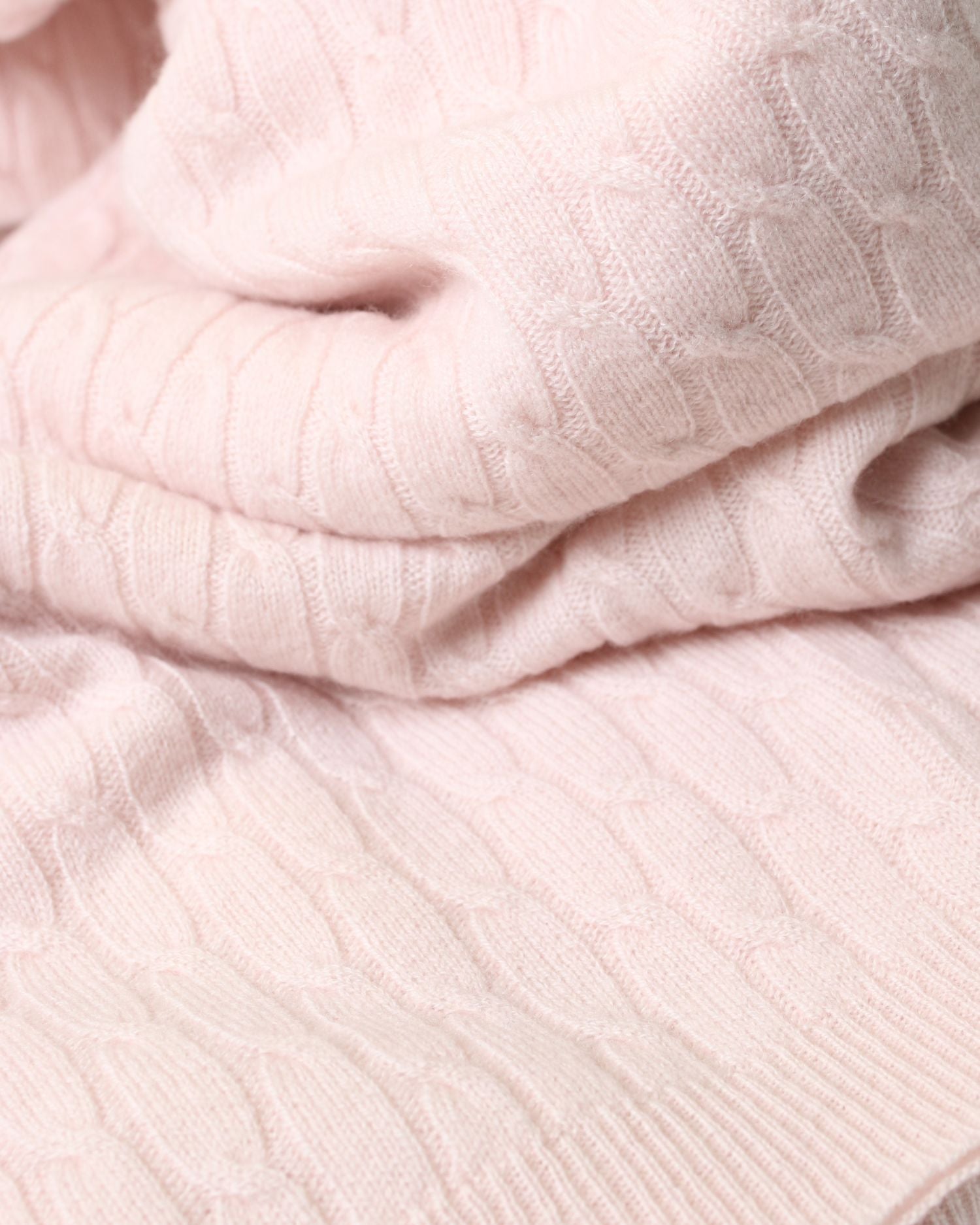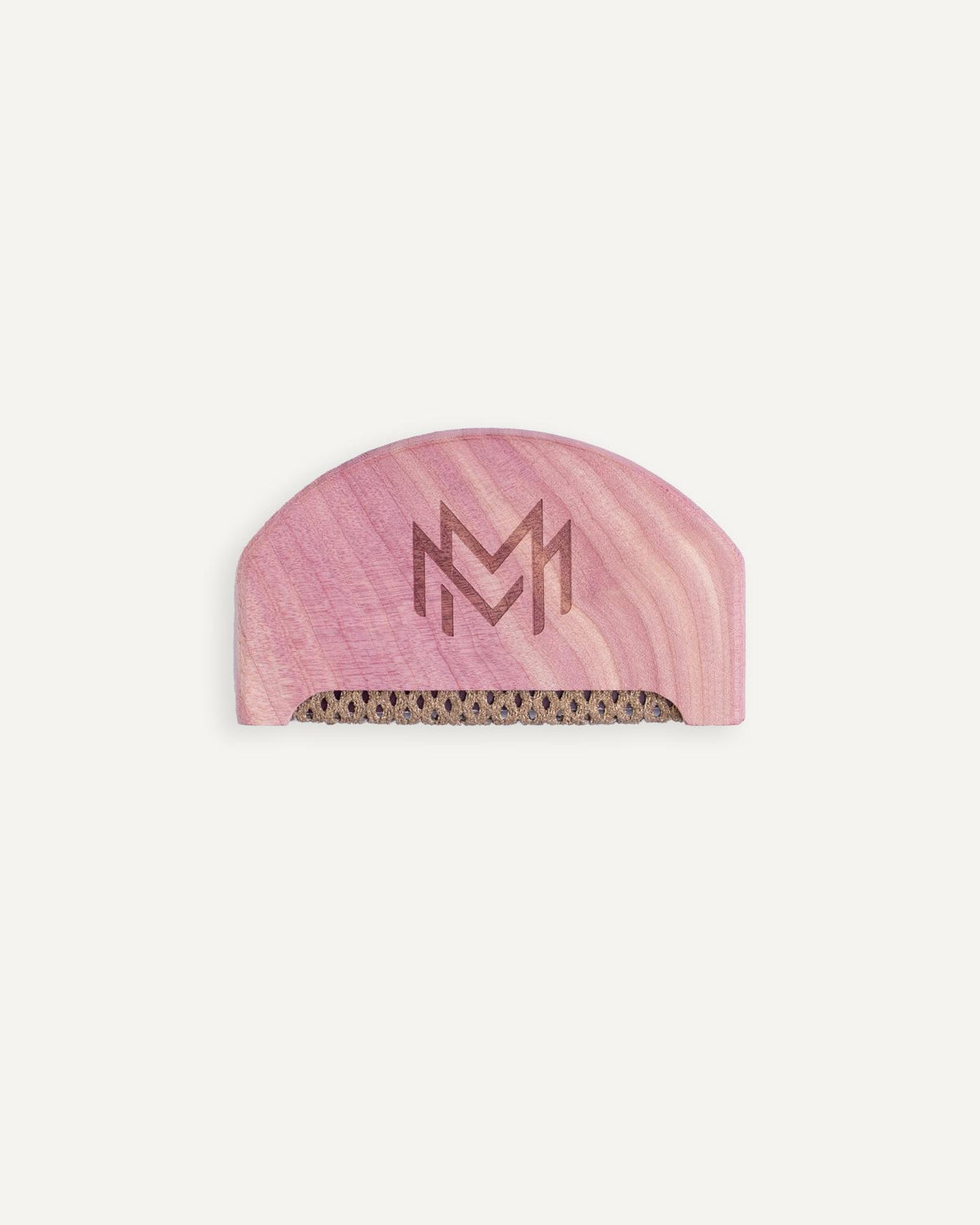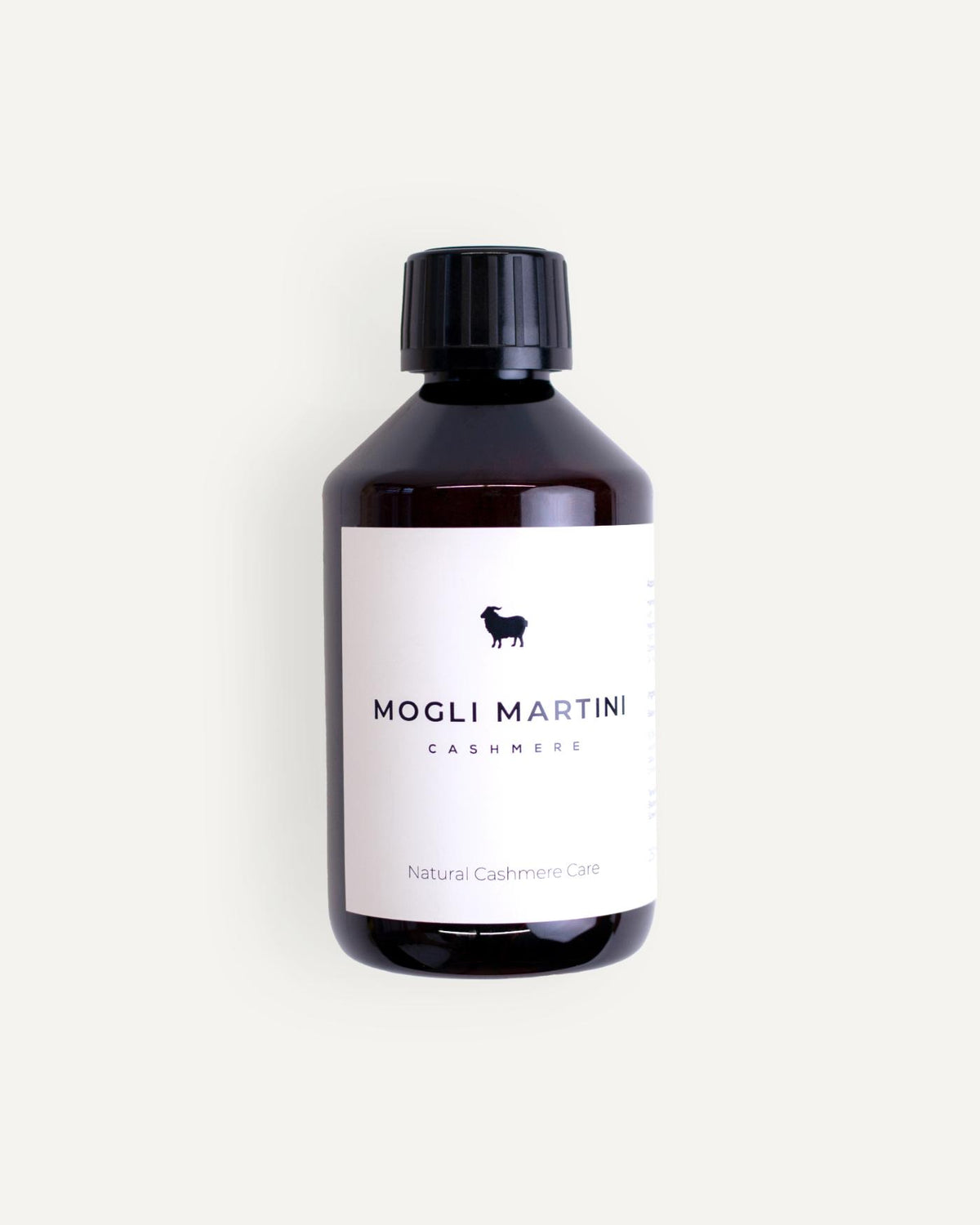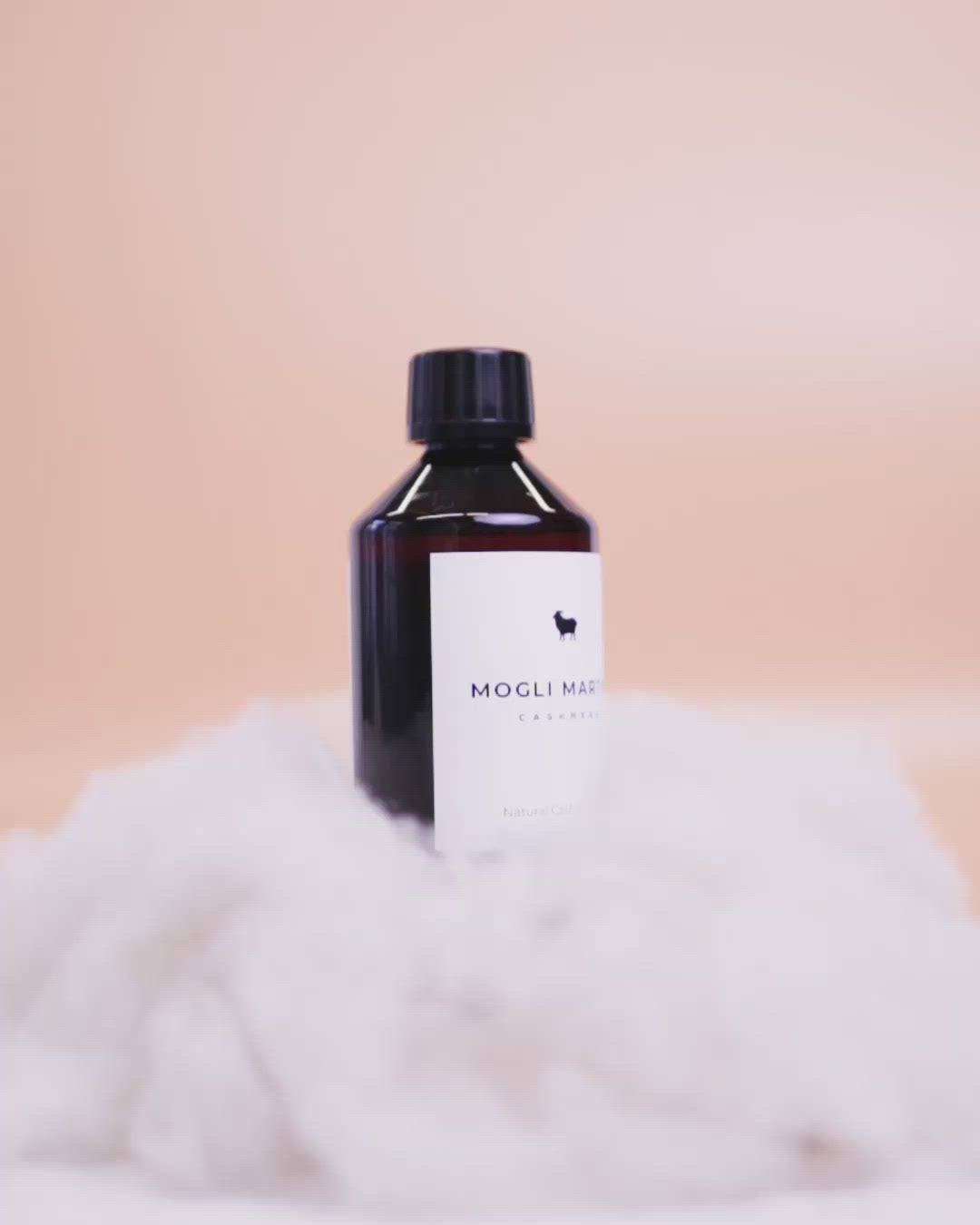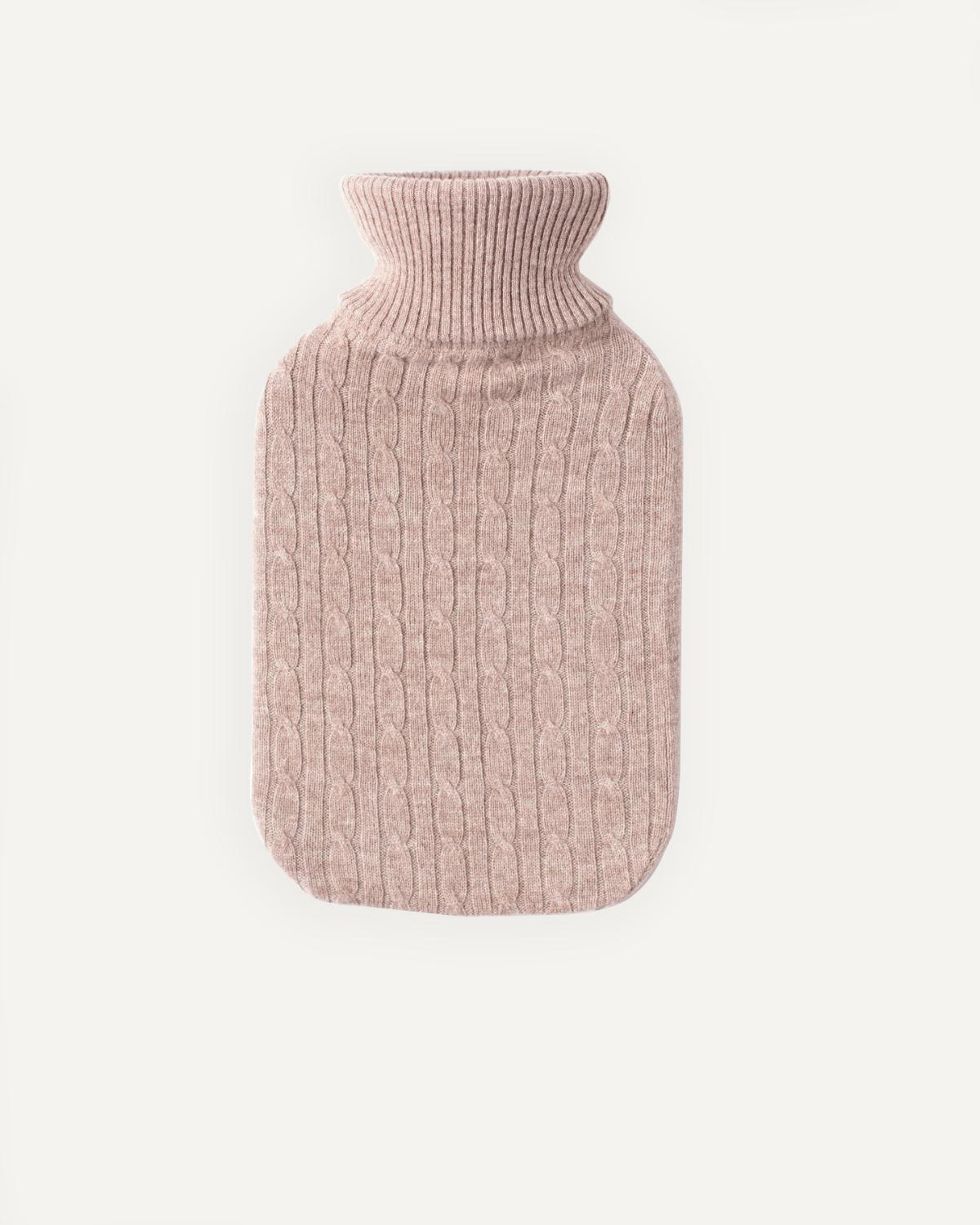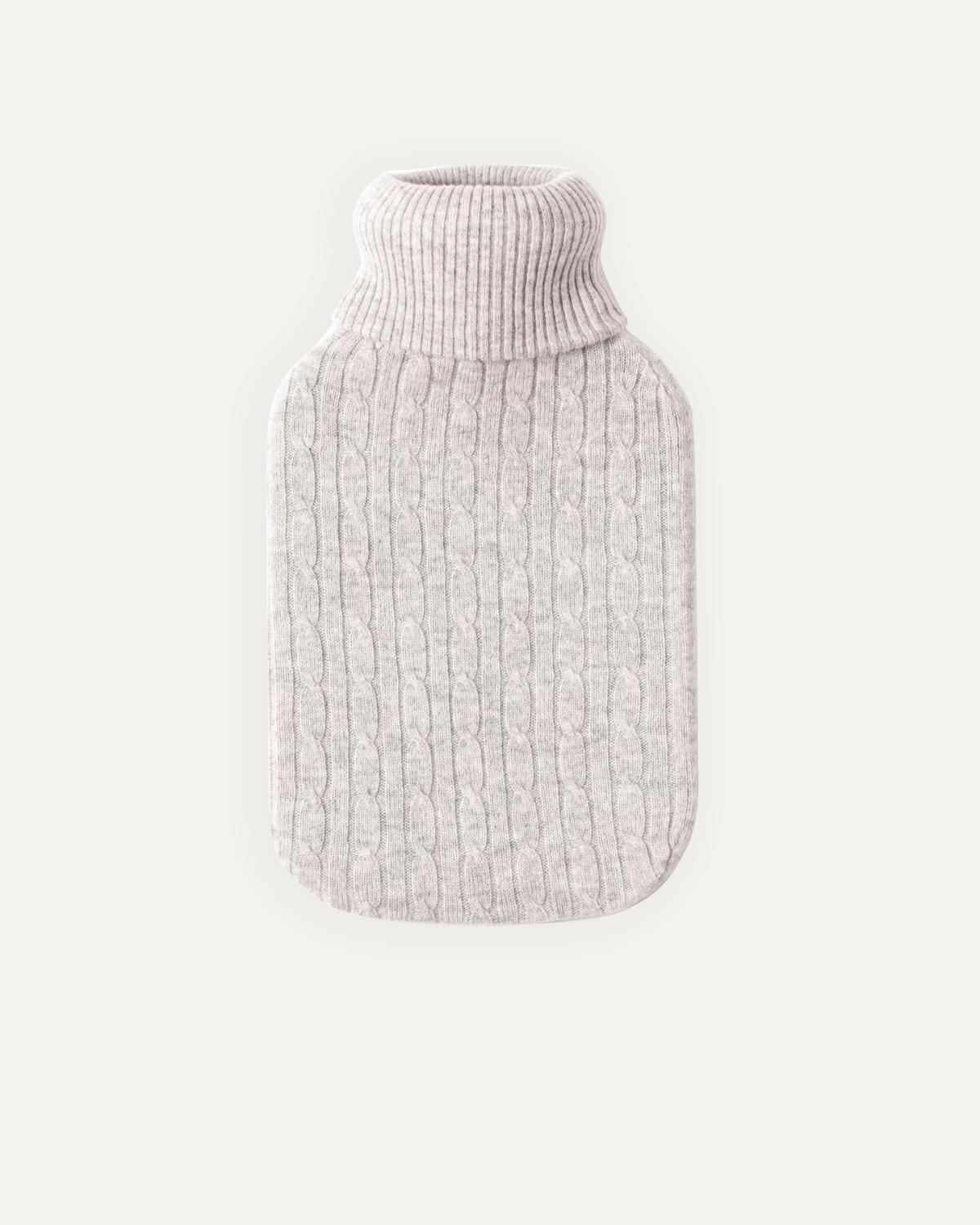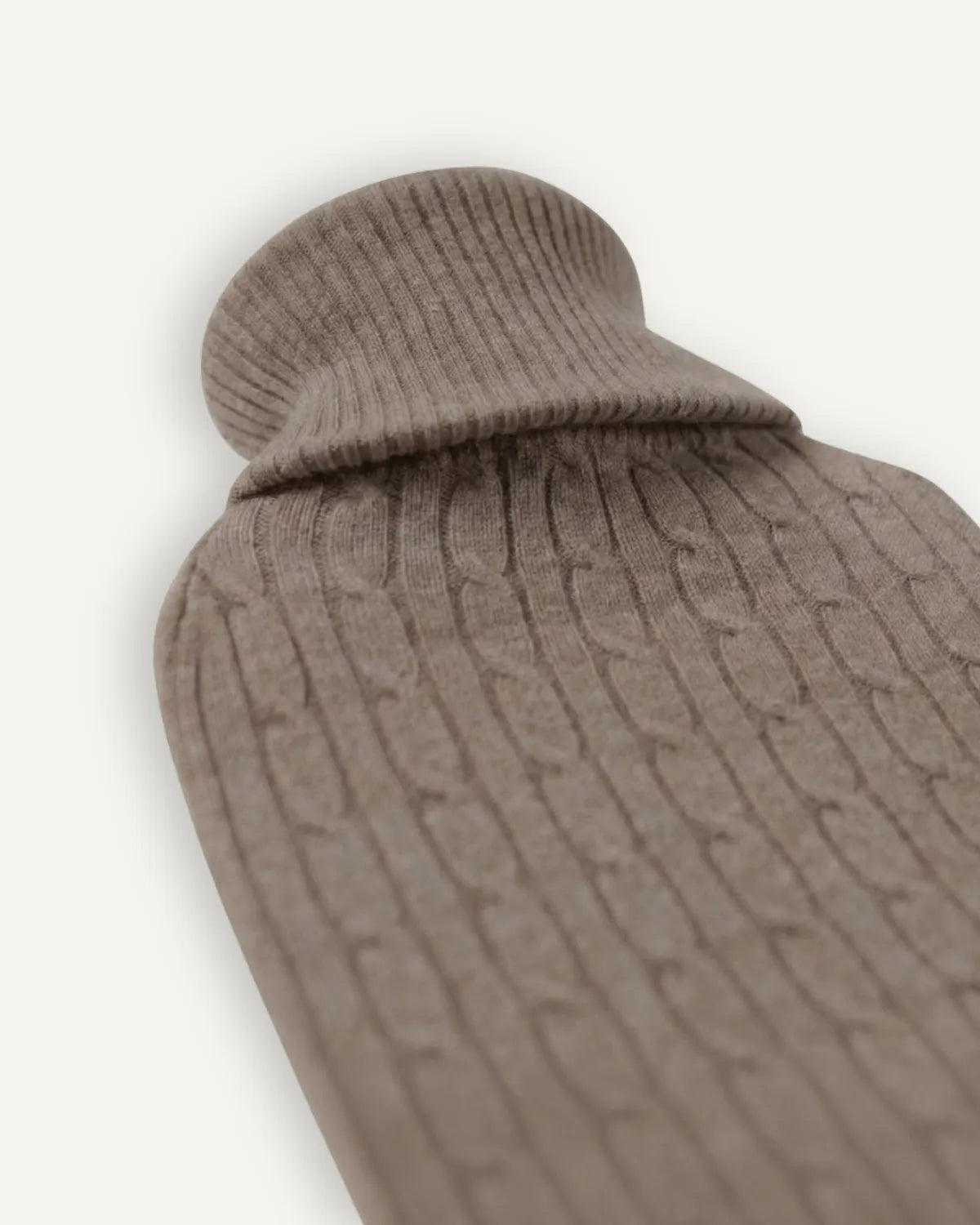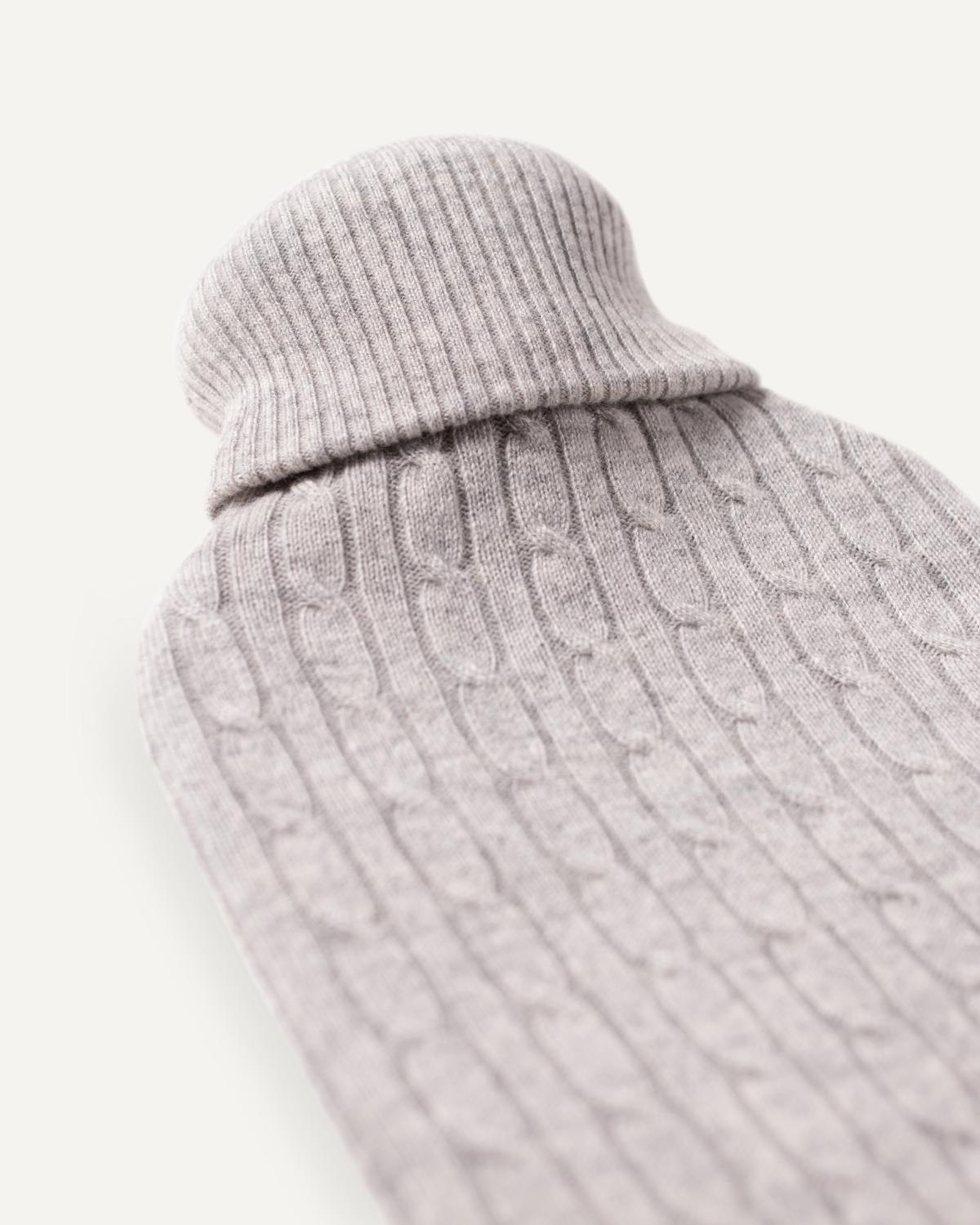Cashmere properties play a large part in the noble wool's title as the most precious wool in the world. The precious wool is characterised by unique fibre properties. The fantastically soft feeling of cashmere on the skin is just one of many. Here we tell you how our popular cashmere textiles are made from the precious fibre of the cashmere goat and what incomparable properties they possess.
Cashmere properties - Why we love cashmere
One property that sets cashmere wool apart is its optimal thermal insulation. Cashmere ensures that the heat produced by the body cannot escape. Although cashmere fibres are incredibly fine, they are characterised by a unique air chamber inside each individual fibre. These air chambers ensure that the heat does not pass through the fabric to the outside. The cashmere fabric therefore ensures that the warmth is stored and is thus an optimal companion for the cold season. Despite the particularly fine fibre, cashmere wool insulates three times as much heat as normal wool.
However, this methodology also works in the other direction. Due to their insulating properties, the air chambers help to prevent heat from the outside from reaching the inside. This cooling property is additionally enhanced by the so-called evaporative cooling. Cashmere is a hygroscopic fabric. This means that the fabric binds the moisture produced by the skin, stores it temporarily in the fibre and then wicks it away to the outside.
This is where another important property comes into play that makes the natural fibre so special. Cashmere can absorb up to a third of its own dry weight in liquid. When it is very warm, the temporarily stored liquid simply dries, creating the evaporative cooling already mentioned. This little tricked-out game of physics makes it possible for cashmere to still be very comfortable against the skin even in warm temperatures . Popular blends like cashmere and silk also make dreamy companions for pleasant summer evenings.

The dirt- and odour-repellent properties of the cashmere fibre not only make it easier to care for the textile, but also to handle the garment on a daily basis. For example, it is often sufficient to simply air the beloved cashmere scarf instead of washing it, as the fibre is naturally excessively odour-repellent. Of course, this doesn't mean that you don't have to wash and care for your beloved cashmere jumper. Quite the opposite: cashmere needs the right care to remain just as soft as on the first day, even many years later. In our article"Washing cashmere - What to look out for in your next wash" you will learn how to wash your cashmere garments properly without unnecessarily stressing the fibres.
Unlike sheep's wool, cashmere is very fine and does not scratch the skin. This is partly due to the fine fibres of the fabric and its heat-regulating properties, but also because cashmere is a hypoallergenic fabric. This results in a fantastically soft feeling with cashmere on the skin, regardless of whether you have allergies or not. Even the neck, a very sensitive area for people with allergies, has enough room to breathe with a scarf made of pure cashmere.
Step by step to the beloved cashmere jumper
So how does the soft underfur of the cashmere goat become a cashmere jumper? As described in our article "Cashmere - Where does the noblest wool in the world come from? ", cashmere is obtained from the underfur, the so-called duvet, of cashmere goats. The following production steps are carried out:
- Combing out: At the beginning of spring, when the high plateaus of Central Asia become warmer again and shine in all their colourful splendour, the goats' fur is traditionally combed out. A distinction is made between hand combing and mechanical combing, whereby high-quality cashmere fibres are usually combed out by hand.
- It is literally a long way from this raw material to the finished cashmere yarn. In the next step, the sorted fibres are transported from the high mountains to the valley for further processing. The rarity and the demanding processing are essential points that contribute to the high price of cashmere textiles.
- The raw material thus obtained is a mixture of hair, dirt and wool grease. The combed-out wool is washed elaborately in several steps and then sorted according to the natural colours of the fibres.
- The boning: In this very important production step, the top coat (Grannenhaar) and the undercoat (Duvet) are carefully separated from each other. Only the undercoat of the goats is processed further. Approximately 150 to 200 grams of cashmere wool are obtained per goat per year.
Depending on the region, different production methods are used to create heavenly soft garments from the fine fibres. This also shows that the art of cashmere textiles has a long tradition in many regions. But now there are garments made of cashmere in all imaginable colours - so how is the natural fibre dyed?

The art of dyeing also varies too much from region to region. For example, in the Kashmir region, dyeing is traditionally done with vegetable dyes in copper cauldrons. However, dyeing natural products is sometimes fraught with difficulties. Due to the different genetic disposition of the goats, the surface structures of the goat hair also differ from each other. This is why the colour pigments adhere more strongly to some fibres than to others, resulting in differently intense colour shades in the end result.
Fine, curly hair, as well as hair that is as long and light as possible, is most valuable, as it absorbs the colouring best.
When it comes to the colour of a cashmere textile, there are also some criteria that you should pay attention to when buying in order to be on the safe side. Cashmere fibres are usually dyed before they are processed into textiles. This means that the entire fibre absorbs the colour. However, if the finished garment is dyed first, not every fibre can be evenly covered with colour everywhere. In high-quality production, the fibres of the fine wool should havethe same shade of colour inside and out.
Cashmere, the most precious wool in the world?
And which cashmere is the best? Which fine wool is the right one for me? Cashmere or merino? Alpaca or cashmere? That is difficult to answer. If you have to choose between different precious wools or different types of cashmere, make sure you look at the quality. You should always include this key criterion in your decision. Likewise, it is advisable to choose traders who are particularly transparent about their production and also the living environment of the cashmere goats.

On the podium of the most exclusive fine textiles, there are other fabrics that have earned this designation to the same extent. In addition to cashmere, the group of fine wools also includes alpaca, vicuña, camel and yak. Fibres that can be categorised as fine wool are only traded in very small quantities.
Due to the fineness of the fibre, cashmere is considered a precious wool. The hairs in the undercoat of cashmere goats are significantly finer than the thinnest sheep's wool and are among the finest animal hairs in the world. The fineness of fibre is measured in microns, with 1,000 microns corresponding to one millimetre. For the combed-out undercoat of cashmere goats to be considered for further processing, the thickness of the fibre must not exceed 19 microns.
For comparison: a human hair has a diameter of about 100 microns.

Cashmere can also be divided into different quality categories. With a thickness of up to 30 microns, cashmere belongs to category C. Fibres between 18 and 19 microns are subordinate to category B. Cashmere fibres, which belong to category A , are the highest quality and finest fibres on the market with a maximum of 14 mic rons.
Only category A cashmere is used in the production of our gorgeous cashmere pieces. The fibres have been carefully combed out by hand from the undercoat of free-roaming cashmere goats. We respect the art of the craft of traditional cashmere production as much as the shepherds and the natural environment of the cashmere goats.
